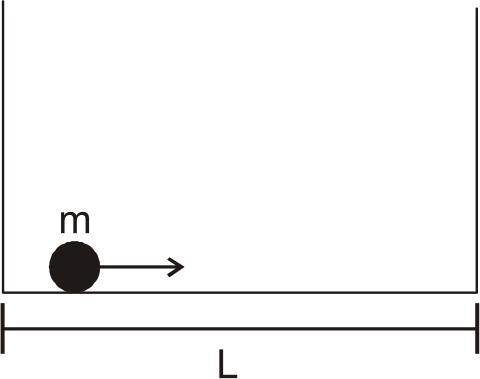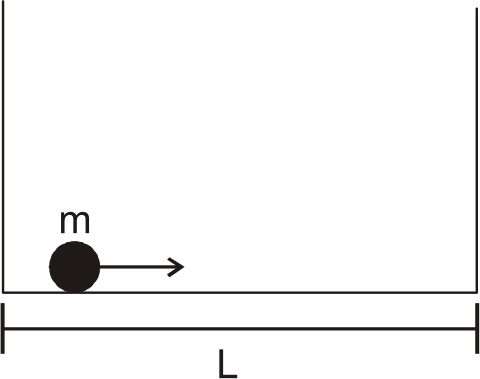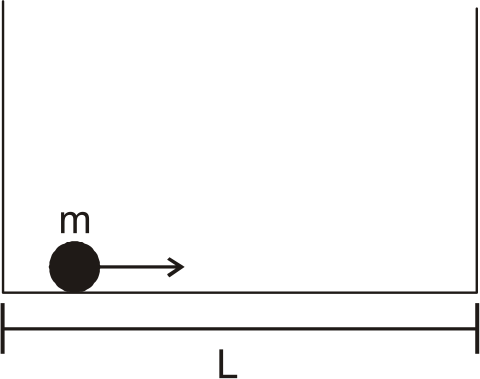The basic idea of Quantum Mechanics is that motion in any system is quantized. The system obeys Classical Mechanics except that not every motion is allowed, only those motions which obey the Bohr-Sommerfeid Quantization.
∮→P.d→r=nh,n∈N.
where →P is the momentum, →r is the position , →r is the position vector and the integral is carried over a closed path. Assuming this is applicable to a particle of mass m moving with a constant speed in a box of lenth L having eleastic collisions with the walls of the box. Answer the following questions. (h=6.6×10−34J−sec.L=3.3A,m=10−30kg)

The allowed kinetic energy of the particle is :
n2h28π2mL2
n2h22mL2
n2h28mL2
n2h232mL2
Kinetic energy E=P22m
E=n2h28mL2
Topper's Solved these Questions
Similar Questions
The basic idea of Quantum Mechanics is that motion in any system is quantized. The system obeys Classical Mechanics except that not every motion is allowed, only those motions which obey the Bohr-Sommerfeid Quantization.
∮→P.d→r=nh,n∈N.
where →P is the momentum, →r is the position , →r is the position vector and the integral is carried over a closed path. Assuming this is applicable to a particle of mass m moving with a constant speed in a box of lenth L having eleastic collisions with the walls of the box. Answer the following questions. (h=6.6×10−34J−sec.L=3.3A,m=10−30kg)

The allowed momenta are given by:View SolutionThe basic idea of Quantum Mechanics is that motion in any system is quantized. The system obeys Classical Mechanics except that not every motion is allowed, only those motions which obey the Bohr-Sommerfeid Quantization.
∮→P.d→r=nh,n∈N.
where →P is the momentum, →r is the position , →r is the position vector and the integral is carried over a closed path. Assuming this is applicable to a particle of mass m moving with a constant speed in a box of lenth L having eleastic collisions with the walls of the box. Answer the following questions. (h=6.6×10−34J−sec.L=3.3A,m=10−30kg)

The difference between ist and IInd energy levels is:View Solution
Knowledge Check
- Question 1 - Select One
A body executing uniform circular motion has its position vector and acceleration vector
Aalong the same directionBin opposite directionCnormal to each otherDnot related to each other - Question 2 - Select One
In simple harmonic motion, at the extreme positions
Akinetic energy is minimum, potential energy is maximumBkinetic energy is maximum, potential energy is minimumCboth kinetic and potential energies are maximum.Dboth kinetic and potential energies are minimum
The velocity vector of the motion described by the position vector of a particle, r=2tˆi+t2ˆj is given by
View SolutionIn brownian motion , the paths of the particles are :
View SolutionA vector →r is equally inclined with the coordinates axes. If the tip of →r is in the positive octant and |→r|=6, then →r is
View SolutionLet →F be the force acting on a particle having position vector →rand→T be the torque of this force about the origin. Then
View SolutionA straight line →r=→a+λ→b meets the plane →r.→n=0atp. Then position vector of P is
View SolutionIn an orbital motion, the angular momentum vector is :
View Solution
